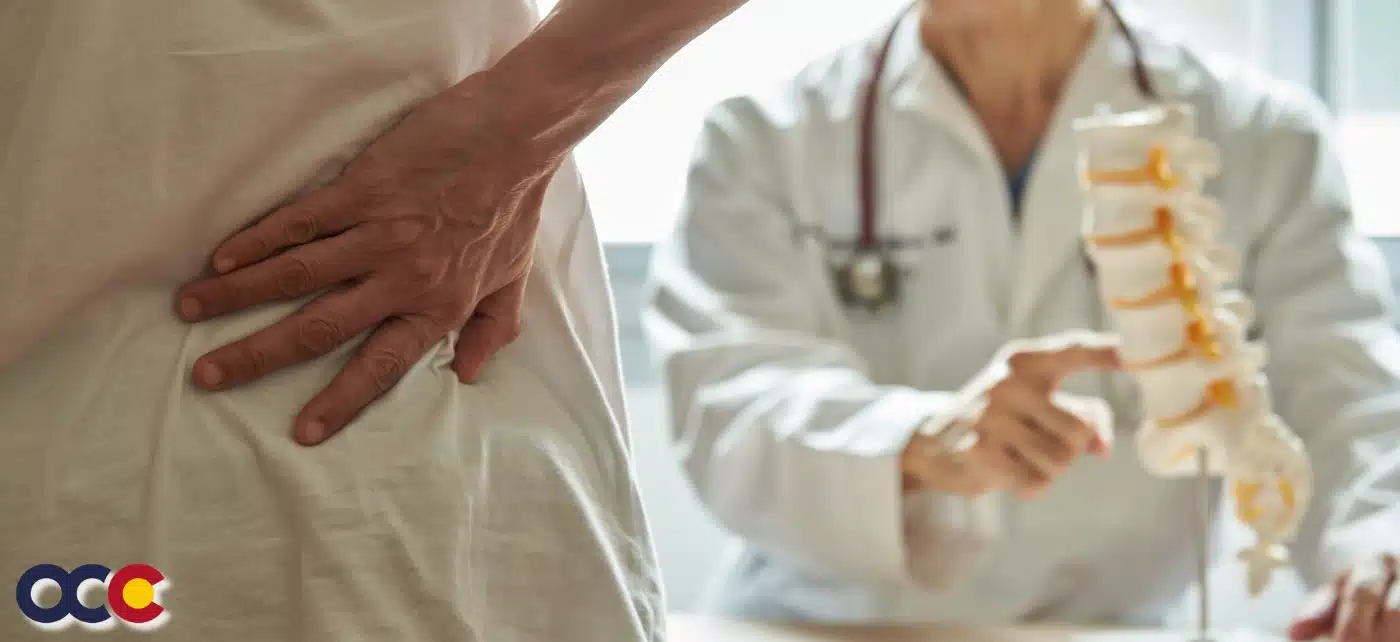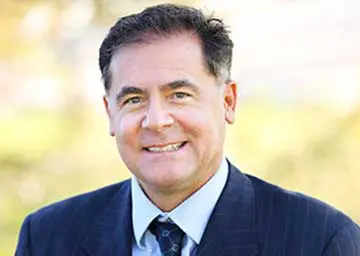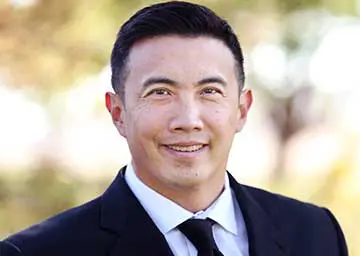If you have lumbar spinal stenosis, you may have trouble walking distances or find that you need to lean forward to relieve pressure on your lower back. Untreated, spinal stenosis worsens over time and can lead to a list of serious and permanent issues that go way beyond just pain. These problems range from numbness and weakness to permanent loss of feeling in your arms, hands, legs, and chest. It can lead to loss of bladder and bowel control, or cauda equine syndrome, which causes severe compression of the nerve roots in the lower back. With spinal stenosis, there is no question you need the best treatment available. You’ll find that at OCC – Advanced Orthopedic & Sports Medicine Specialists in Denver, Parker, and Aurora, Colorado. You need someone not only extremely skilled but someone you can trust.
OVERVIEW
Spinal stenosis happens when the space inside the backbone is too small. “Stenosis,” which means narrowing, can cause pressure on the spinal cord or the nerves that go from the spinal cord to the muscles. Spinal stenosis can happen in any part of the spine but is most common in the lower back. Spinal stenosis is relatively common. Degenerative spinal changes affect up to 95% of people by the age of 50. Spinal stenosis is one of those changes. For people over 65 undergoing spine surgery, lumbar spinal stenosis is the most common diagnosis. Younger people may be at higher risk of spinal stenosis if they have scoliosis or other spinal problems. Women have a higher risk of developing spinal stenosis than men.
ABOUT THE SPINE
The spine is made up of a series of connected bones, which are stacked in a column from the skull to the tailbone. The bones are called vertebrae, which are separated by spongy, shock-absorbing discs that cushion the bones so they don’t rub against each other. The spinal cord is a bundle of nerves that run through a tunnel formed by the vertebrae. This tunnel is called the spinal canal. With age, the spinal discs start to dry out and no longer cushion the bones, causing the spinal canal to narrow. Less space within the spinal canal cramps the spinal cord and the nerves that branch off it (nerve roots). The spine not only helps an individual stay upright but also flexes to allow flexing and bending. Additionally, the spine is a key part of the nervous system that connects the brain to the body.
WHAT IS SPINAL STENOSIS?
Spinal stenosis is the narrowing of the spinal column that causes pressure on the spinal cord or narrowing of the openings (called neural foramina) where spinal nerves leave the spinal column. There are two different types of spinal stenosis. The type you have depends on where your spine is. The condition is cervical stenosis, which is when the neck area of the spine is narrow, and lumbar stenosis, which is when the lower back area of the spine is narrow. Someone can have one or both types of spinal stenosis, but lumbar stenosis is the most common.
CAUSES
Spinal stenosis has several causes. They are split into two main groups:
Acquired causes mean they develop later in life, most commonly after the age of 50. Causes of acquired stenosis include:
- Osteoarthritis
- Bone spurs
- Bulging or herniated disks
- Thickened ligaments
- Spinal cysts or tumors
- Paget’s disease, where the bones grow abnormally large and brittle
- Spinal injuries such as car accidents and other trauma
Congenital spinal stenosis affects babies and children. Only 9% of cases result from congenital causes. It can happen due to:
- Issues with spine formation during fetal development
- Genetic mutations and condition
SYMPTOMS
- Sciatica—burning, shooting pains down the leg that start as an ache in the lower back or buttocks
- Foot drop—painful leg weakness that may cause the foot to “slap” on the ground
- A hard time walking, standing, or trying to get out of a chair
- Loss of bowel control
- Loss of sensation in feet
- Loss of sexual ability
- Severe pain and weakness that spreads into one or both legs
- Radiculopathy—pain that radiates or shoots out from the spine causing numbness, tingling, or weakness in the arms and legs
- Cauda equina syndrome—loss of feeling in the pelvic area, or problems with incontinence. This can cause permanent nerve damage if untreated.
NON-SURGICAL TREATMENTS
There are several different conservative treatments to try and address spinal stenosis:
- Apply heat and cold loosens up muscles and could help heal inflammation. Use one or the other on the neck or lower back. Hot showers are also good.
- Over-the-counter pain relievers—aspirin, acetaminophen (Tylenol), ibuprofen (Advil, Motrin) and Naproxen
- Physical therapy to strengthen back, stomach, and leg muscles
- Braces to support back
- Massage
- Anti-depressants—taking tricyclic antidepressants such as amitriptyline can help ease chronic pain
- Muscle relaxants
- Anti-seizure medication to ease pain from damaged nerves
- Corticosteroid injections
- Nerve blocks
- Practicing good posture
- Losing weight—extra pounds put added pressure on the back
WHEN IS SURGERY INDICATED?
The decision to undergo surgery is typically considered when conservative treatments have failed to provide relief and debilitating symptoms significantly impact a person’s daily life. Common surgical procedures for spinal stenosis include:
- Laminectomy (decompression surgery) –this involves removal of the lamina or back part of the vertebra
- Laminotomy—similar to laminectomy, it is a less extensive procedure as only a smaller portion of the lamina is removed
- Foraminotomy—this is focused on enlarging the neural foramen, the opening through which nerve roots exit the spinal canal
- Spinal fusion—this involves fusing two or more vertebrae to stabilize the spine. During the procedure, the surgeon removes the intervertebral disc between the affected vertebrae and replaces it with bone graft material. The graft stimulates the growth of new bone and fusion of the adjacent vertebrae over time. In addition to bone grafts, the surgeon may use metal implants such as rods, screws, and plates to provide additional stability during the fusion process. The hardware helps to hold the vertebrae in the correct place until the fusion is complete.
GETTING THE RIGHT DIAGNOSIS. GETTING THE RIGHT DOCTOR.
A thorough and detailed physical examination is a crucial first step in helping determine if a patient is suffering from spinal stenosis. This makes it crucial to find the most experienced and skilled orthopedic surgeon who has treated every type of spinal stenosis and seen everything it can do to a patient. The surgeon you choose has to have extensive experience in diagnosing and treating it all; like the specialized surgeons you’ll find at Advanced Orthopedics in Denver, Parker, and Aurora, Colorado. They’ll begin by looking for signs of spinal stenosis such as loss of sensation and weakness. To test how well your nerves sense feeling, most likely they will touch your legs in many places with a pin, cotton swap, or feather. To check your balance you will be asked to close your eyes while keeping your feet together. Additionally, imaging tests such as X-rays, MRIs, CT scans, and electromyography (EMG) can help them “see” your spine and determine the exact location and extent of the problem. Spinal surgery can seem scary, but your surgeon at Advanced Orthopedics is there to walk you through every step and answer all your questions. If you have spinal stenosis, schedule an appointment with Advanced Orthopedics, it’s where you want to be.









